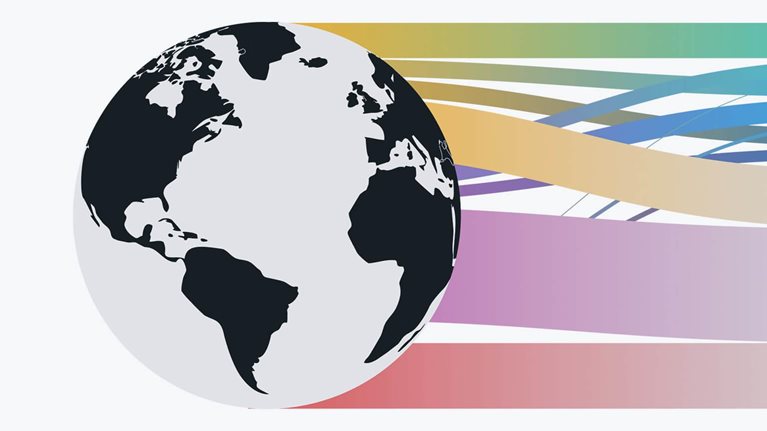As the world emerges from the pandemic phase of COVID-19, which claimed millions of lives, public-health officials are tasked with remaining vigilant. “We often hear ‘It’s the worst pandemic in a century.’ But the truth is, the risk of pandemics is only growing,” says Raj Panjabi, MD, former special assistant to US President Joe Biden and senior director for global health security and biodefense at the White House National Security Council (NSC). As potential drivers of future outbreaks, Panjabi cites the increased risk that pathogens could spill over from animals, chronic underinvestment in public-health systems around the world, and population movement.
Panjabi served in his role at the NSC from February 2022 to August 2023. Previously, he had led the president’s Malaria Initiative and taught at Harvard Medical School. He also cofounded Last Mile Health, an organization that partners with governments to train and empower community health workers who provide essential primary healthcare in the world’s most remote communities.
Pooja Kumar, a McKinsey Health Institute global leader, sat down with Panjabi as his tenure with the Biden administration was winding down. The following is an edited version of their conversation about preventing and preparing for pandemics. The second part of the discussion—focused on health equity and access and the capacity of healthcare workers—appears in the Conversations on Health article, “We need to invest in health workers between major pandemics—not just when we have a pandemic.”
Pooja Kumar: Raj, as we emerge from the public-health crisis that was COVID-19, many folks are starting to think about what the real lessons learned are—what we can take away and build stronger so that we don’t go through something like that again in quite the same way. What do you think can or should be the role of governments in pandemic prevention and preparedness going forward?
Raj Panjabi: In this area, President Biden often says, “It’s not about if but when there’ll be another pandemic.” The science supports that. We know there’s the recurring risk of influenza pandemics; we now also know there’s a risk of coronavirus pandemics. Some modelers estimate that the risk of another pandemic as bad as or worse than COVID-19 could be as high as 50 percent in the next 25 years. We have to get better at detecting, preventing, preparing for, responding to, and recovering from pandemics.
Those five actions are the pillars of the National Biodefense Strategy the president released in October 2022. Because of the risk of future pandemics, because of the number of lives we’ve lost, it’s really important we double down on investing in pandemic prevention and preparedness. There’s a moral case for it; there’s also an economic case for it. The value proposition’s pretty simple: if we spend billions now, we can save trillions tomorrow.
Pooja Kumar: What types of things could the private sector do to help?
Raj Panjabi: The private sector plays a massive role. Let’s just take preparedness for a moment. The way we define preparedness is the ability to develop vaccines, tests, treatments, and personal protective equipment and to stand up clinical trials more rapidly if we have a pandemic outbreak or something that may emerge as a pandemic.
We’ve put some very big “moonshot” goals out there that we believe, working closely with our colleagues at the Office of Science and Technology Policy, are achievable with the technical and scientific knowledge we have today. They include being able to develop and authorize vaccines within 100 days of the next pandemic. We know how much coronavirus vaccines mattered—moving what had been about a three- to four-year development timeline down to 300 days. Imagine how many more lives, how much less economic damage, we’d have if we could have a vaccine in 100 days.
The private sector has a role to work on vaccines, if companies are involved in biologics. They also have a role to play in the supply chain: to ensure that vaccines get from cities to rural areas and from this country to other countries.
And, of course, truly making it possible for every at-risk person in the world who wants a vaccine to get it means ensuring that manufacturing capacity is more distributed. In every region of the world we’ve worked with, from Southeast Asia to Latin America to Africa, you see governments trying to create incentives for manufacturers—of vaccines, treatments, personal protective equipment, tests. Governments want to build more capacity now to deal with the everyday epidemics we face and then be able to pivot during a pandemic to surge that capacity.
Pooja Kumar: Any other lessons learned that you’re going to take away, personally, from the pandemic?
Raj Panjabi: There are three Big Es I think of. Number one, we’ve got to be more equitable when we respond. That means getting more care to more people during a pandemic, after a pandemic, and in between pandemics, both for infectious diseases and the everyday epidemics of premature death. We’ve got to be focused on closing that inequity every day around the world.
The second is we’ve got to be a lot more effective: for example, by developing nasal vaccines that could—if successfully researched, developed, and authorized—block transmission of coronavirus. This could have an impact on potential future variants and the current COVID-19 variants now circulating and also on future pandemics. That would be a mucosal vaccine that could stop other respiratory-transmitted viruses, which are the kinds that create devastating pandemics in very short periods of time.
We’ve also got to do better at focusing on reducing mortality and morbidity in settings globally—to be more effective in those settings. We had, during my tenure at the National Security Council, not only a COVID-19 pandemic but also a multinational Mpox1 outbreak. Making sure people have better treatments, in clinics as close to home as possible, was important for controlling that. But we could have been working in West Africa, where I first saw Mpox patients many years ago, to give people access to vaccines and treatments.
We’ve also had several viral-hemorrhagic-fever outbreaks—three Ebola outbreaks in Uganda and Marburg-virus-disease outbreaks in Equatorial Guinea and Tanzania. Thankfully, those outbreaks were controlled and then ended as a result of the work of local health workers and the institutions in those countries with the support of the United States investing millions of dollars; sending first responders and laboratory technicians; and establishing labs to provide infection prevention and control, to train and hire community health workers, and to train doctors. But the mortality rate of those who were infected was still higher in Uganda than it would have been if that same pathogen had been here in the United States. Clinical care gets less investment and needs to be more of a focus—medical preparedness needs to be focused. So that’s the second E: being more effective in the United States and globally.
We’ve got to make sure those countermeasures get to everyone everywhere in the world who needs them. And all of this is scientifically and technologically possible. It’s humanly possible to do it.
The third E is to be more efficient. Speed is lives. We’ve got to be faster in developing countermeasures, vaccines, and treatments. We’ve got to be faster in rolling out tests. We’ve got to be faster in standing up safe clinical trials to repurpose therapies, testing the repurposing of existing therapies for novel pathogens, and developing novel therapies.
We’ve got to do a lot of that faster. We’ve got to make sure those countermeasures get to everyone everywhere in the world who needs them. And all of this is scientifically and technologically possible. It’s humanly possible to do it.
We need individuals who care—whoever you are, wherever you live—the next time there’s a pandemic. Are you getting the right medical advice to protect yourself? Does your doctor or nurse have the gloves, the gowns, and the equipment to take care of you and to keep themselves safe? If you have symptoms, do you have a test available as quickly as possible to see if you have the disease? If you have it, do you get treated? And once vaccines get developed in a pandemic, do you want to protect yourself with those vaccines?
That’s what pandemic preparedness is about. And that’s why it’s worth investing in it.


